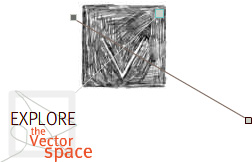Hurricane Digital Memory Bank
Preserving the Stories of Katrina, Rita, and Wilma
Producers' Statement
In early January 2006 the New York Times released its list of the ten most read stories of 2005; six of them concerned Hurricane Katrina. Katrina stands as the worst natural disaster in U.S. history, by far the most expensive and one of the deadliest. Only the hurricanes in Galveston (1900) and Okeechobee (1928) killed more people. The storm displaced more than a million people and created an unprecedented humanitarian crisis that will not quickly subside. Hurricane Katrina was only one (albeit the most destructive) of fourteen hurricanes and twelve tropical storms that hit the United States (and the Caribbean) in 2005, the worst hurricane season ever recorded. Less than three weeks after Katrina, Hurricane Rita, an even more powerful storm and, indeed, the strongest hurricane ever in the Gulf of Mexico, struck Louisiana and Texas. Although Rita did not destroy refineries and ports in the Texas Gulf as originally feared, the storm still caused close to $10 billion in damages. Nearly one month later, Wilma became the third Category 5 hurricane of this disastrous season. Like prior catastrophes such as the San Francisco Earthquake of 1906 and the great 1927 Mississippi Flood, the impact of these natural disasters continues to reverberate across the country.
How will the story of those storms be recorded and later told? How can we insure that the historical record is diverse and inclusive? The Hurricane Digital Memory Bank (HDMB) is one response to the effort to collect and preserve the social and human memory of these devastating storms. Organized by George Mason University's Center for History and New Media (CHNM) and the University of New Orleans (UNO) and funded by the Alfred P. Sloan Foundation, the Hurricane Digital Memory Bank (www.hurricanearchive.org) hopes to foster some positive legacies by allowing the people affected by these storms to tell their stories in their own words, which as part of the historical record will remain accessible to a wide audience for generations to come.
HDMB asks contributors to write first-hand accounts or anecdotes; to upload on-scene images, podcasts, or other born-digital files; or to copy blog postings or emails and and submit them to the archive. In addition, we ask contributors to provide the geographic coordinates of either their location before the hurricanes hit or the location that best represents the content of their submission by entering a zip code or street address. By dynamically combining this information and their contribution with Google Maps, we provide a visual way of browsing the archive that enables new kinds of research and connections to be made. Visitors can easily browse the contributions in a specific location (down to a specific street corner), or create a customized map that is populated solely by contributions that contain a certain keyword or type of object.
The project builds on prior work by the Center for History and New Media (with the support of the Alfred P. Sloan Foundation) to collect and preserve history online through what we have begun to call "digital memory banks," including the Blackout History Project, the Echo project, and the September 11 Digital Archive. The latter project gathered more than 150,000 digital objects from tens of thousands of individual contributors and to date has been the single most successful effort to collect and preserve digital materials related to a historical event. As our own efforts expanded, others have launched projects in the online collecting of history. For example, the British Broadcasting Corporation's two-year online project to gather the stories of Britain's 15 World War II veterans and survivors of the London Blitz, entitled WW2 People's War, has collected more than 1,200 narratives. In the United States, the National Park Foundation, the National Park Service, and the Ford Motor Company are using the Internet to collect first-hand narratives of life during wartime for a planned Rosie the Riveter/World War II Home Front National Historical Park in Richmond, California. Growing numbers of online collecting efforts have also emerged outside of formal institutional contexts. The photo sharing website, Flickr, for example, has become a place to document shared events as well as one's own life. HDMB stands as another example of how the Internet can promote democratic means for saving the digital record of significant events.
Our largest goals, then, are to both collect a rich and diverse record about the storms and their aftermath and to promote popular participation in presenting and preserving the past.



